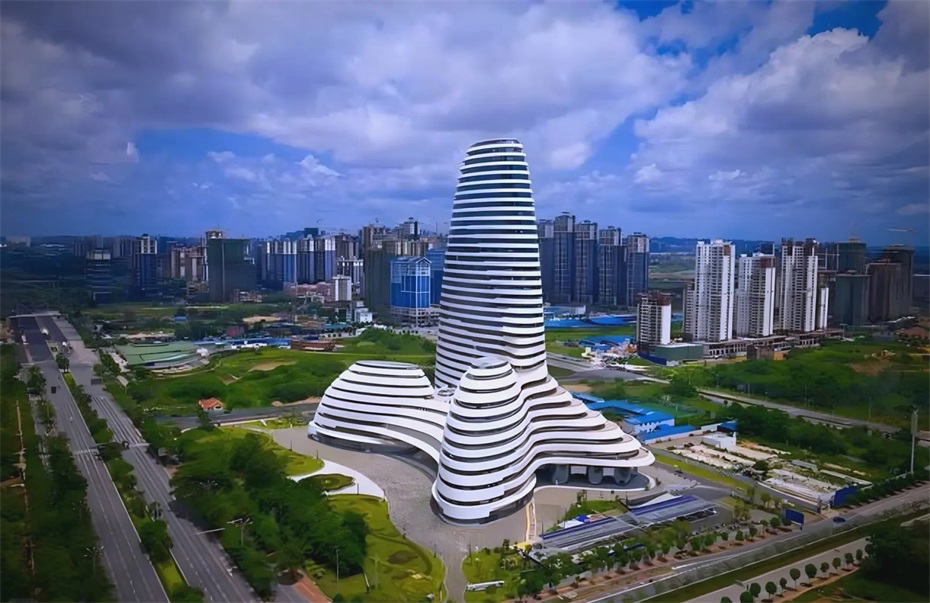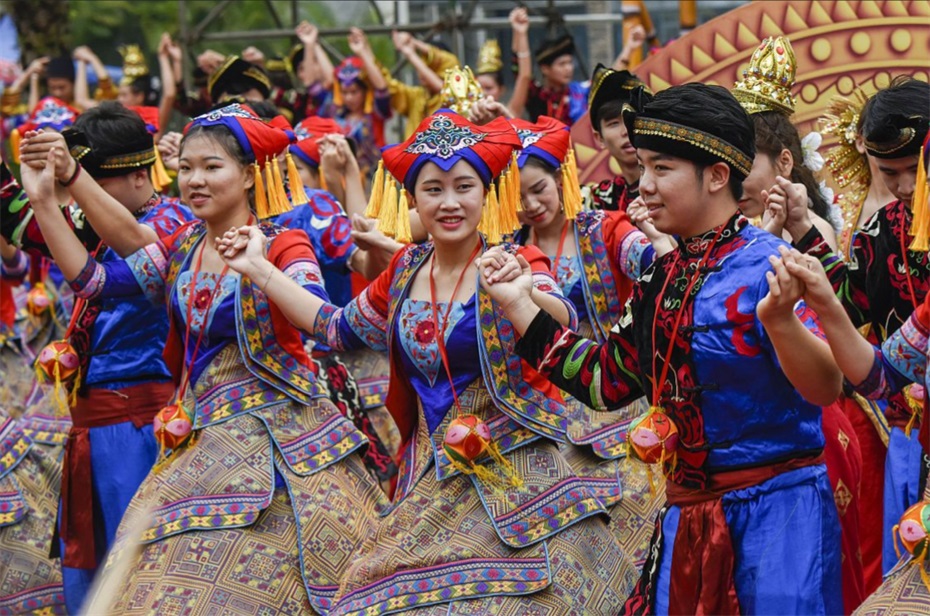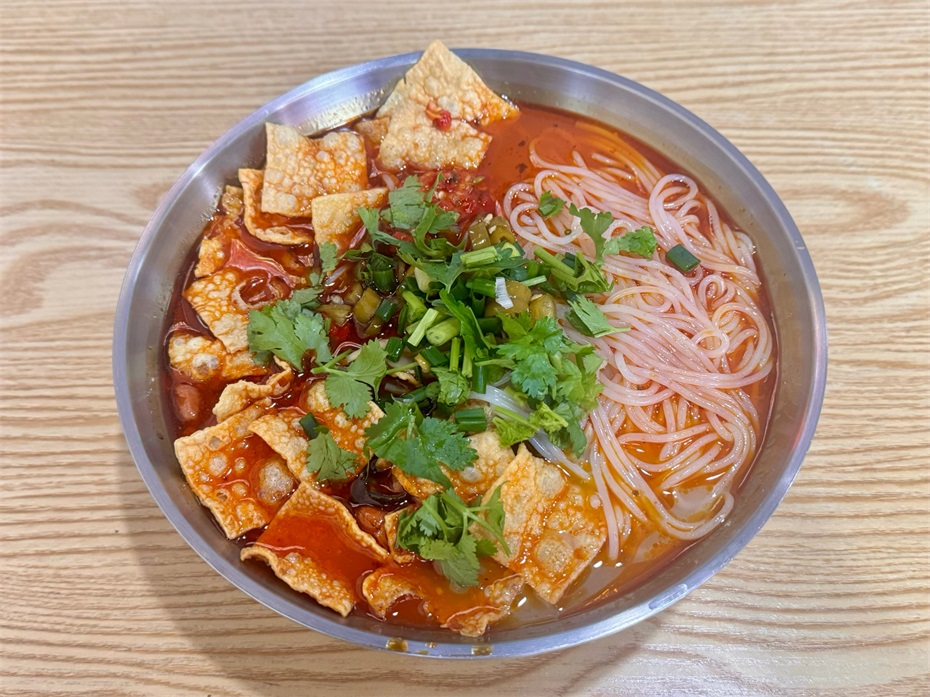Guangxi
Overview of Guangxi Zhuang Autonomous Region

Guangxi Zhuang Autonomous Region, abbreviated as "Gui", is located in the western part of southern China and is the only provincial-level administrative region adjacent to ASEAN countries by land and sea. The total area of the district is 237600 square kilometers, with 14 prefecture level cities under its jurisdiction, and a permanent population of 50.47 million people (2022 data), of which the Zhuang population accounts for about 31.4%. In 2022, the gross domestic product of the entire region will reach 2.63 trillion yuan, which is a frontier window for China's opening up and cooperation with ASEAN and an important node for the Western Land Sea New Corridor.
Guangxi currently governs 14 prefecture level cities including Nanning (capital), Liuzhou, Guilin, Wuzhou, Beihai, Fangchenggang, Qinzhou, Guigang, Yulin, Baise, Hezhou, Hechi, Laibin, and Chongzuo. As the autonomous region with the largest population of ethnic minorities in China, Guangxi is known as the "land of Guangxi" and "the best mountains and waters in the world". It is also the permanent host of the China ASEAN Expo.
2¡¢ Geographical features
1. Location characteristics
Guangxi is located between latitude 20 ¡ã 54 ¡ä -26 ¡ã 24 ¡ä N and longitude 104 ¡ã 28 ¡ä -112 ¡ã 04 ¡ä E. It borders Guangdong to the east, Hunan to the northeast, Guizhou to the northwest, Yunnan to the west, Vietnam to the southwest, and Beibu Gulf to the south. The land boundary of the entire region is 696 kilometers long, and the coastline is 1628 kilometers long, making it the most convenient sea route in southwestern China.
2. Terrain and landforms
The terrain of the entire region is mainly mountainous and hilly
North: the edge of the Yunnan-Guizhou Plateau
Central region: Guangxi Basin (accounting for 26% of the total area)
Southern region: Coastal plains and plateaus
Typical landform: Karst landform (accounting for 51% of the total area)
3. Water system distribution
The Pearl River water system: Xijiang River and its tributaries (accounting for 85% of the whole area)
Yangtze River system: Upper reaches of Xiangjiang River (northeast)
Independent river systems flowing into the sea: Nanliu River, Qinjiang River, etc
Lakes: Guilin Ronghu, Shanhu, etc
4. Climate characteristics
Belonging to subtropical monsoon climate:
Annual average temperature: 16-23 ¡æ
Annual precipitation: 1000-2800 millimeters
Significant features: Warm and humid, rainy and hot in the same season
3¡¢ Historical context
1. Origin of Civilization
Paleolithic Age: Liujiang Man Site (50000 years ago)
Neolithic Age: Zengpiyan Site (12000 years ago)
Pre Qin period: activity areas of the Baiyue ethnic group such as Luo Yue and Xiou
2. Organizational history
Qin Dynasty: Guilin Commandery and Xiang Commandery were established
Tang Dynasty: Establishment of Lingnan West Road
Song Dynasty: Guangnan West Road, named after "Guangxi"
1958: Guangxi Zhuang Autonomous Region was established
3. Modern and Contemporary Development
1850s: The birthplace of the Taiping Rebellion
1885: Great Victory at Zhennanguan
1990s: Construction of the Southwest China Sea Passage
21st Century: Frontiers of China ASEAN Cooperation
4¡¢ Cultural Essence
1. Ethnic cultural characteristics

Yao culture: King Pan Festival, Long Drum Dance
Miao culture: Lusheng Festival, silver jewelry craftsmanship
Jing ethnic culture: Ha Jie, solo qin art
2. Intangible Cultural Heritage
Traditional Drama: Gui Opera, Color Tunes, Zhuang Opera
Folk art: Zhuang brocade weaving, Miao wax printing
Traditional skills: Qinzhou Nixing pottery and Liubao tea making
Folk Culture: Zhuang Song Market, Yao Panwang Festival
3. Dialect characteristics
Southwest Mandarin: Guiliu dialect (Northern)
Cantonese: Wuzhou, Nanning and other places
Plain language: Guinan region
Zhuang language: Zhuang ethnic group settlement area
Other minority languages: Yao, Miao, etc
5¡¢ Tourist destinations
1. World Heritage Sites

Zuojiang Huashan Rock Painting Cultural Landscape
Lingqu (World Irrigation Heritage Site)
2. 5A level scenic spot
Guilin Lijiang Scenic Area
Guilin Duxiu Peak Wangcheng Scenic Area
Nanning Qingxiu Mountain Tourist Area
Crocodile Mountain Scenic Area in Nanwan, Weizhou Island, Beihai
Baise Uprising Memorial Park
3. Featured tourism
Landscape sightseeing tour: Guilin Lijiang River, Detian Waterfall
Coastal leisure tour: Beihai Yintan, Weizhou Island
Border Customs Tour: Friendship Pass, Dongxing Port
Ethnic Culture Tour: Sanjiang Dong Village, Longji Terraced Fields
6¡¢ Food map
1. Characteristics of Guilin cuisine

Guilin rice noodle, Beer Fish
Liuzhou: Luosifen, sour meat
Beihai: Seafood Feast
2. Featured snacks
Colored sticky rice
oil-tea camellia
Ai Ye Ci Ba
Sour food
Guilinggao
3. Specialty drinks
Liupao tea
Guilin three HuaJiu
Siraitia grosvenorii
Notoginseng
7¡¢ Development Status
1. Industrial system
Modern agriculture: sugar cane, silkworms, fruits
Modern industry: automobiles, machinery, metallurgy
Modern service industry: tourism, logistics, finance
Digital Economy: China ASEAN Information Harbor
2. Transportation network
Port: Beibu Gulf Port (International Gateway Port)
High speed railway: "Five Vertical and Five Horizontal" mainline network
Aviation: Nanning Wuwei International Airport
Highway: The mileage of expressways exceeds 8000 kilometers
3. Open cooperation
China (Guangxi) Pilot Free Trade Zone
Western Land Sea New Corridor
china-asean expo
Financial Open Portal for ASEAN
From the misty rain of the Li River to the surging tides of the Beibu Gulf, from the singing sea of Zhuang's hometown to the customs of the border, this "mountain and water are the best in the world" Zhuang's hometown is writing a magnificent chapter of high-quality development in Guangxi in the new era with the spirit of "embracing all rivers and being open and inclusive". Here, there is both the poetic sentiment of 'Jiang as a green ribbon, mountains as green as jade hairpin' and the heroic spirit of 'thousands of sails competing, hundreds of boats competing', which is becoming an important bridge for the construction of the China ASEAN community with a shared future.
simliy
